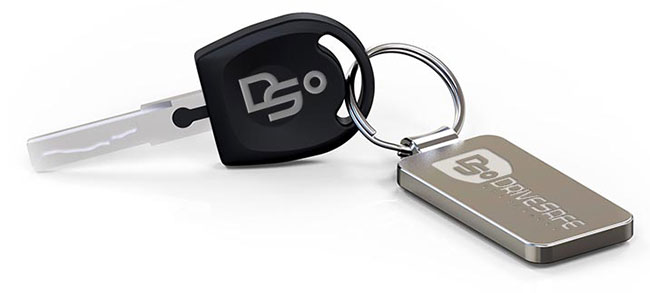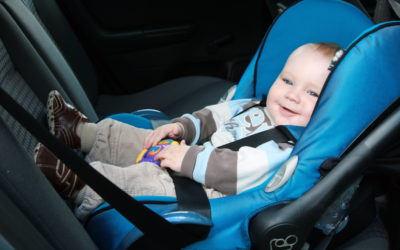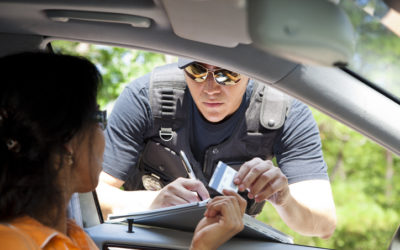How to Reduce Your Risk of Car Accidents on the Road
DRIVESAFE ONLINE DEFENSIVE DRIVING COURSES
Receive an Insurance Discount. Money-Back Guarantee!
Mobile-friendly viewing
Fully narrated video with closed captioning
Intelligent bookmarking to start/stop when you want
99% passing rate on user’s first attempt
Certificate emailed immediately after completion
Only $24.95
1-HOUR
6-HOUR
How to Reduce Your Risk of Car Accidents
Car accidents can be extremely scary, painful, costly, and time-consuming.
Each year, car accident statistics show that about 1.25 million people die in car crashes – this makes for about 3,287 deaths per day worldwide. In addition, about 20 million to 50 million people are injured or disabled each year due to car accidents.
Luckily, there are ways you can reduce your risk of car accidents on the road.
Check out this guide to learn how to avoid car accidents and drive safely.
Avoid Distracted Driving
First things first, you need to make sure you avoid distracted driving.
While making the occasional phone call or munching on takeout while driving may not seem like the biggest deal, each day in the US, 9 people are killed in fatal crashes and over 1000 people are injured in accidents that involve at least one driver who is distracted.
When we say distracted driving, we’re talking about driving while doing another activity that takes your attention off the road. There are also three categories of distracted driving:
- Manual (being distracted with your hands)
- Visual (being distracted with your eyes)
- Cognitive (being distracted by your thought processes)

Out of all of these types of distracted driving, texting is considered to be the worst of all distractions. In fact, more than a million crashes per year are caused by cellphone use while driving. And, in the United States, 1 out of 4 car accidents are caused by texting while driving.
Because of this, more and more states are banning texting and driving. In fact, 42 out of 50 states now have texting and driving laws.
If you have trouble saying no to the temptation to use your cellphone while driving, here are some tips to help you forget about your phone when you’re behind the wheel:
- Completely turn off your cellphone or turn your phone on silent
- Invest in a GPS navigation system so you don’t have to rely on your cellphone for directions
- Keep your phone in the trunk or in the backseat of your car
- Download an app that doesn’t allow you to text while driving
- Send messages to your friends before hitting the road so they’ll know not to bother you while driving
- If you have something important to send someone, pull into a parking lot or side street before texting
In addition, here are some other tips that will help you avoid distracted driving accidents in general:
- Limit the number of passengers you allow into your car
- Pull over in a safe area to eat
- If you get drowsy, pull to the side of the road, or if you’re on a long road trip, call it a night and continue driving in the morning
- Plan your route before you go out so you’re not looking up directions while driving
- Resist the temptation to reach for items that fall when driving
By following these tips, you’ll be able to focus on the road and eliminate distractions that could get you into a car accident.
Don’t Drive Buzzed
We all know the dangers of drunk driving.
However, despite knowing these dangers, many people still choose to get behind the wheel after a few drinks. Driving after drinking any amount of alcohol can impair your judgment and slow down your reaction time.
In fact, according to the CDC data concerning crashes involving alcohol, one out of three traffic fatalities in the US involves a drunk driver.
So, if you’re going to drink, plan to take an Uber, Lyft, or a cab home, or designate a sober a driver. Even though cabs can be expensive, keep in mind that a DUI fine can cost you thousands of dollars.
Additionally, getting a DUI can also cause you to lose your job, and your insurance company will raise your auto insurance premium.
It’s simply never worth it to drink and drive, so never let yourself get behind the wheel after drinking.
Watch Your Speed
According to the National Highway and Traffic Administration, speeding results in nearly 10,000 fatal injuries per year.
So, while driving a bit over the speed limit may not seem like that big of a deal, it could cost you your life (or, at the very least, damage to your car).
When you choose to drive over the speed limit, you’re choosing to drive at a speed for which the road wasn’t built. And in doing so, you put yourself and the other drivers on the road in danger.
We know that with the hustle and bustle of modern-day life, everyone is in a hurry. To make sure you don’t speed, the best thing to do is to give yourself plenty of time to get where you’re going.
Also, remember that speeding tickets can cost you a lot of money and in some cases, can cause you to lose points on your license. So, avoid the temptation and stick to the speed limit.
Don’t Follow Too Closely
No one likes being tailgated. It’s annoyingit’s also very dangerous.
Following too closely can easily cause you to rear-end the vehicle in front of you. If you’re not sure what an appropriate distance is to keep between you and the vehicle in front of you, follow the three-second rule.
According to this rule, you should be three seconds behind the car in front of you at all times. If you’re driving down the highway, you should make it four or five seconds.
So, when driving, pick an object next to the road, such as a tree or a sign, and when the car in front of you reaches that object, start counting. If you pass that object before you get to three, you need to back off a bit.
Another good rule of thumb to follow is to put a car length between you and the car in front of you for every 10 miles of the speed limit. For example, if the speed limit is 50 miles per hour, then you should put five car lengths between you and the car in front of you.
Park with Care
In parking lots, mostly everyone is driving slowly and watching out for pedestrians. However, don’t let the leisurely pace of parking lots fool you- there can be a lot of danger here.
Most drivers are so focused on finding a great spot that they don’t pay close enough attention to what’s going on around them.
In addition to watching out for a spot, you also need to be on the lookout for doors swinging open, shopping carts, kids darting around, and other pedestrians.
So, when you’re parking, try to worry less about finding the best spot and more about keeping your wits about it.
Wear Your Seat belt
Seat belts were engineered to keep you safe on the road, so never neglect wearing one. Even if you’re just driving down the block, you should always wear your seat belt.
Not only does your seat belt keep you safe in the event of an accident, but it also helps keep other passengers safe.
In 2017 alone, an estimated 14,955 lives were saved by seat belts. However, if everyone had buckled up, the fatality rate would have been lower by an additional 2,549 lives. And, nearly half of the people who were killed by vehicle accidents in 2017 were not wearing seat belts.
It literally takes two seconds to put on your seat belt, so there’s really no excuse for not wearing one. Also, make it a car rule that everyone has to buckle up when riding in your car.
Perform Maintenance Regularly
Vehicle maintenance isn’t just important for the longevity of your car, it’s also important for your safety as a driver.
Without proper maintenance, your vehicle may suddenly stall or fail. Here are some regular maintenance tasks you should perform on your vehicle to ensure that it’s running smoothly:
- Check your tires each month to ensure that they’re properly inflated
- Change your oil every 7500 to 10000 miles
- Check your brake fluid, transmission fluid, washer fluid, and coolant on a regular basis
- Rotate your tires every 6 months, or every 6,000 to 8,000 miles
- Replace your engine coolant every 30,000 miles, or every 2 to 3 years
- Change your power steering fluid every 50,000 miles, or every three years
- Change your air filter every 12,000 to 15,000 miles
By following these maintenance tips plus other ones recommended by your mechanic, you help ensure better safety on the road for you and other drivers.
Never Assume
You can control how you drive, but you can’t control how others drive.
Never assume a driver is going to stop, make a turn, or is as concerned about traffic safety as you. To drive cautiously, you should assume they’re not.
When going through a green light, make sure to check both ways to make sure no one else is running a red light.
Avoiding Car Accidents: Wrap Up
As you can see, there’s a lot you can do to avoid motor vehicle crashes.
Other posts you might enjoy:
We Believe in Nashville
Our thoughts are with all those in Nashville and across the great state of Tennessee affected by the recent tornadoes. The safety of our DriveSafe Online family, customers and partners is our primary concern. Tennessee Governor Bill Lee called for residents to stay...
Child Passenger Safety Regulations: A State-By-State Guide
Your State-By-State Guide to Child Passenger Safety Regulations Child passenger safety regulations are in place because a leading cause of death for children, one in every four, is driving-related accidents. Each one of these deaths is a terrible tragedy, but you may...
Will A Speeding Ticket Affect My Insurance?
By Patrick Mileham DriveSafe Online Contributing Writer Speeding tickets are part of your driving record so they may increase the amount you pay for insurance. That’s the bad news. The good news is there are several factors that must occur to actually trigger a rate...
Your Road to Savings

Patrick M. is Editorial Director for the always expanding DriveSafe Online library of courses. With over two decades of experience developing award-winning training, he now focuses on innovating online driver safety training. Pulling from his background in journalism, he steers the wheel behind the creation of top-tier content that promotes a better journey—whether on the digital highway of learning or the real roads we travel every day.


